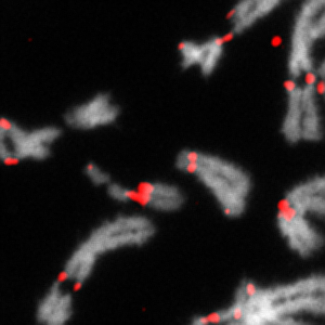
Unusual DNA structures involved in neuron ageing
DNA can transiently adopt structures that are more complex than the double helix. Quadruple helices, or DNA quadruplexes, are an example of this. They are the preferred targets in the treatment of cancers. By studying their roles in neurons, an international collaboration involving a chemist from CNRS 1 has for the first time shown that quadruplexes are markers of neuronal ageing and exert a negative influence of autophagy 2 , a primordial process for neurons because of its protective effect against neurodegenerative diseases. Published in eLife on 11 February, these findings highlight the precautions that must be taken when using quadruplex ligands as anticancer agents, because these compounds could trigger neuronal disorders symptomatic of age-related diseases.

© Andrey S. Tsvetkov, McGovern Medical School at Houston, TX, USA
Small-molecule G-quadruplex stabilizers reveal a novel pathway of autophagy regulation in neurons, Jose F Moruno-Manchon, Pauline Lejault, Yaoxuan Wang, Brenna McCauley, Pedram Honarpisheh, Diego A Morales Scheihing, Shivani Singh, Weiwei Dang, Nayun Kim, Akihiko Urayama, Liang Zhu, David Monchaud, Louise D McCullough, Andrey S Tsvetkov, eLife, 11 février 2020
doi: 10.7554/eLife.52283


